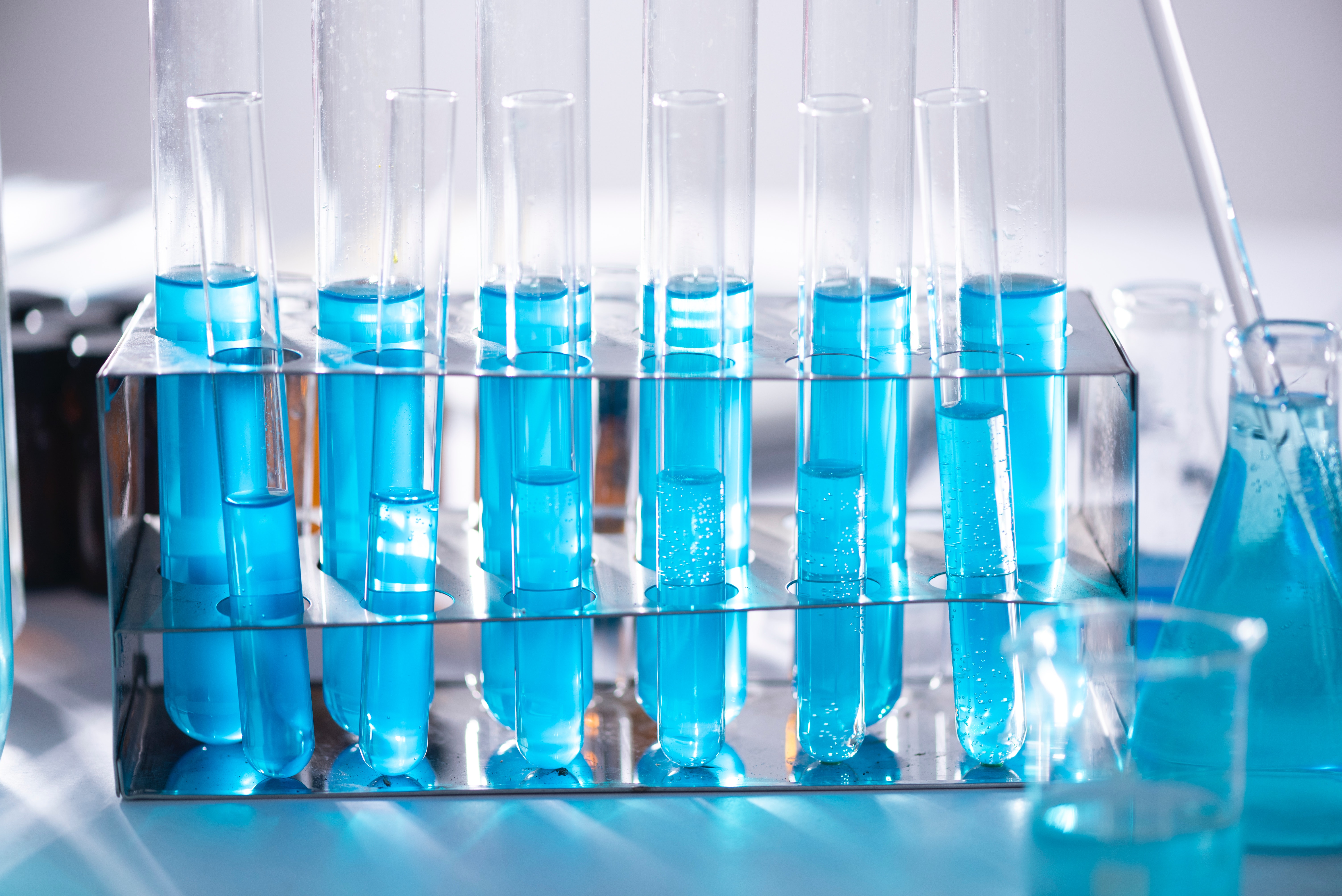Common 9 Hormones Tests for Infertility
October 1 2019

For infertility, below are the common 9 hormones tests and the meanings, functions.
LH, FSH, E2, P4, DHEA, AMH, TSH, PRL, Bhcg
-
LH
(Luteinizing Hormone) is a hormone produced by gonadotropic cells in the anterior pituitary gland.
In females, an acute rise of LH ("LH surge") triggers ovulation and development of the corpus luteum. In males, where LH had also been called interstitial cell–stimulating hormone (ICSH), it stimulates Leydig cell production of testosterone. It acts synergistically with FSH. -
FSH (Follicle Stimulating Hormone) is synthesized and secreted by the gonadotropic cells of the anterior pituitary gland, and regulates the development, growth, pubertal maturation, and reproductive processes of the body. FSH and luteinizing hormone (LH) work together in the reproductive system.
FSH Activity/functions
FSH regulates the development, growth, pubertal maturation and reproductive processes of the human body.- In both males and females, FSH stimulates the maturation of primordial germ cells.
- In males, FSH induces Sertoli cells to secrete androgen-binding proteins (ABPs), regulated by inhibin's negative feedback mechanism on the anterior pituitary. Specifically, activation of Sertoli cells by FSH sustains spermatogenesis and stimulates inhibin B secretion.
- In females, FSH initiates follicular growth, specifically affecting granulosa cells. With the concomitant rise in inhibin B, FSH levels then decline in the late follicular phase. This seems to be critical in selecting only the most advanced follicle to proceed to ovulation. At the end of the luteal phase, there is a slight rise in FSH that seems to be of importance to start the next ovulatory cycle.
- In both males and females, FSH stimulates the maturation of primordial germ cells.
-
E2 (Estradiol measuring estrogen) is an estrogen steroid hormone and the major female sex hormone. It is involved in the regulation of the estrous and menstrual female reproductive cycles. Estradiol is produced especially within the follicles of the ovaries, but also in other tissues including the testicles, the adrenal glands, fat, liver, the breasts, and the brain. Estradiol is produced in the body from cholesterol through a series of reactions and intermediates.
Female reproductive system
In the female, estradiol acts as a growth hormone for tissue of the reproductive organs, supporting the lining of the vagina, the cervical glands, the endometrium, and the lining of the fallopian tubes. It enhances growth of the myometrium. Estradiol appears necessary to maintain oocytes in the ovary. During the menstrual cycle, estradiol produced by the growing follicles triggers, via a positive feedback system, the hypothalamic-pituitary events that lead to the luteinizing hormone surge, inducing ovulation. In the luteal phase, estradiol, in conjunction with progesterone, prepares the endometrium for implantation. During pregnancy, estradiol increases due to placental production. -
P4 (progesterone) is an endogenous steroid and progestogen sex hormone involved in the menstrual cycle, pregnancy, and embryogenesis of humans and other species. It belongs to a group of steroid hormones called the progestogens, and is the major progestogen in the body.
Progesterone is sometimes called the "hormone of pregnancy", and it has many roles relating to the development of the fetus:-
Progesterone converts the endometrium to its secretory stage to prepare the uterus for implantation. At the same time progesterone affects the vaginal epithelium and cervical mucus, making it thick and impenetrable to sperm. Progesterone is anti-mitogenic in endometrial epithelial cells, and as such, mitigates the tropic effects of estrogen. If pregnancy does not occur, progesterone levels will decrease, leading, in the human, to menstruation. Normal menstrual bleeding is progesterone-withdrawal bleeding. If ovulation does not occur and the corpus luteum does not develop, levels of progesterone may be low, leading to anovulatory dysfunctional uterine bleeding.
-
During implantation and gestation, progesterone appears to decrease the maternal immune response to allow for the acceptance of the pregnancy.
-
Progesterone decreases contractility of the uterine smooth muscle. This effect contributes to prevention of preterm labor.
-
A drop in progesterone levels is possibly one step that facilitates the onset of labor.
-
In addition progesterone inhibits lactation during pregnancy. The fall in progesterone levels following delivery is one of the triggers for milk production.
-
Progesterone converts the endometrium to its secretory stage to prepare the uterus for implantation. At the same time progesterone affects the vaginal epithelium and cervical mucus, making it thick and impenetrable to sperm. Progesterone is anti-mitogenic in endometrial epithelial cells, and as such, mitigates the tropic effects of estrogen. If pregnancy does not occur, progesterone levels will decrease, leading, in the human, to menstruation. Normal menstrual bleeding is progesterone-withdrawal bleeding. If ovulation does not occur and the corpus luteum does not develop, levels of progesterone may be low, leading to anovulatory dysfunctional uterine bleeding.
-
DHEAS (Dehydroepiandrosterone, also known as androstenolone) is an endogenous steroid hormone. It is one of the most abundant circulating steroids in humans, in whom it is produced in the adrenal glands, the gonads, and the brain.
It functions as a metabolic intermediate in the biosynthesis of the androgen and estrogen sex steroids both in the gonads and in various other tissues. However, DHEA also has a variety of potential biological effects in its own right, binding to an array of nuclear and cell surface receptors,[10] and acting as a neurosteroid and modulator of neurotrophic factor receptors. -
AMH (Anti-Müllerian hormone) is a hormone secreted by cells in developing egg sacs (follicles). The level of AMH in a woman's blood is generally a good indicator of her ovarian reserve.
Ovarian
AMH is expressed by granulosa cells of the ovary during the reproductive years, and limits the formation of primary follicles by inhibiting excessive follicular recruitment by FSH. AMH expression is greatest in the recruitment stage of folliculogenesis, in the preantral and small antral follicles. This expression diminishes as follicles develop and enter selection stage, upon which FSH expression increases. Some authorities suggest it is a measure of certain aspects of ovarian function, useful in assessing conditions such as polycystic ovary syndrome and premature ovarian failure. -
TSH (Thyroid-stimulating hormone) is a pituitary hormone that stimulates the thyroid gland to produce thyroxine (T4), and then triiodothyronine (T3) which stimulates the metabolism of almost every tissue in the body.
-
PRL (Prolactin), also known as luteotropic hormone or luteotropin, is a protein best known for its role in enabling mammals, usually females, to produce milk.
Prolactin is secreted from the pituitary gland in response to eating, mating, estrogen treatment, ovulation and nursing. It is secreted in pulses in between these events. Prolactin plays an essential role in metabolism, regulation of the immune system and pancreatic development. -
Bhcg(Human chorionic gonadotropin) is a hormone produced by the placenta after implantation. The presence of hCG is detected in some pregnancy tests (HCG pregnancy strip tests).
Function
Human chorionic gonadotropin interacts with the LHCG receptor of the ovary and promotes the maintenance of the corpus luteum during the beginning of pregnancy. This allows the corpus luteum to secrete the hormone progesterone during the first trimester. Progesterone enriches the uterus with a thick lining of blood vessels and capillaries so that it can sustain the growing fetus because of its similarity to LH, hCG can also be used clinically to induce ovulation in the ovaries as well as testosterone production in the testes. As the most abundant biological source in women who are presently pregnant, some organizations collect urine from pregnant women to extract hCG for use in fertility treatment.
Human chorionic gonadotropin also plays a role in cellular differentiation/proliferation and may activate apoptosis.
Reference: https://en.wikipedia.org/wiki/Luteinizing_hormone
Call us at 289 812 5518 to book your appointment today!
